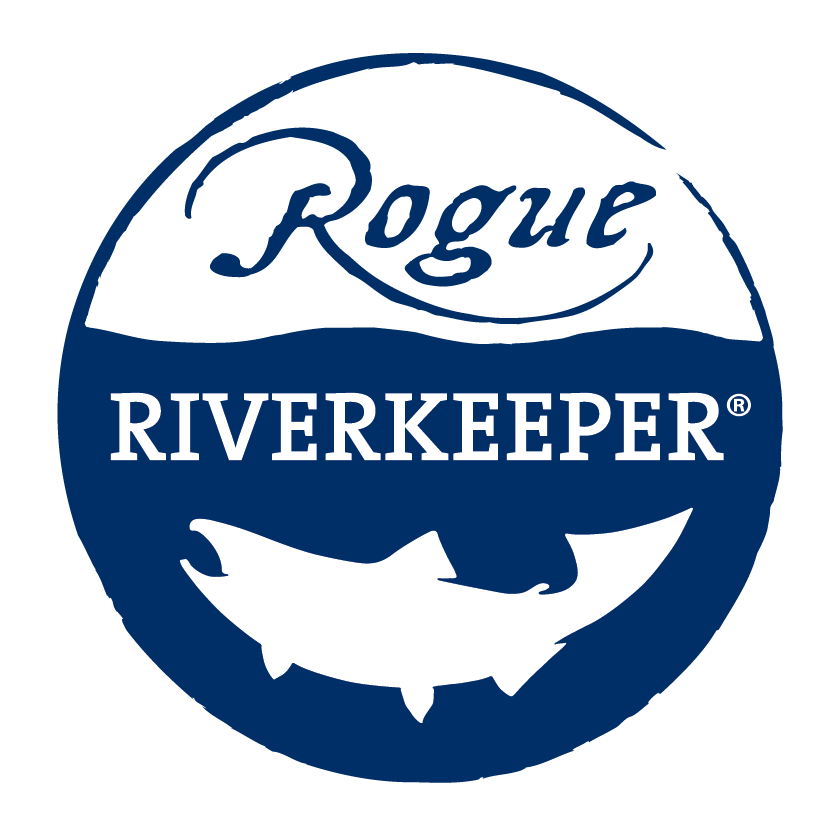That’s a wrap: Rogue Riverkeeper’s water quality results for 2022
Rogue Riverkeeper’s data from our summer water quality monitoring program has now been compiled!
Check out the report card below to see at a glance which locations have great water quality and meet the standard for water contact safety and which locations do not. During the summer, we share the data we find on the Swim Guide app and on our webpage. Thanks to the help of a crew of volunteers who visit locations in far out reaches of the Rogue basin we are able to collect water samples and process them in our water quality lab at our office. Our regular monitoring allows us to measure bacterial contamination so that we can all be informed when we recreate in the water.
Rogue Riverkeeper samples lake, stream and river water for one thing: one type of bacteria Escherichia coli (the abbreviated name is E. coli). The presence of E. coli indicates fecal contamination from some kind of warm-blooded animal. Fecal contamination is commonly associated with illness. The state of Oregon uses the presence of E. coli as the standard by which the state determines water is safe for human contact. If there is a high presence of E. coli, there are probably other fecally transmitted disease-causing organisms present as well.
This year’s results show a continuing pattern in our basin. While the main stem of the Rogue River shows overall reliable safe water for swimming with plenty of dilution by high quality water from surface water sources (streams) and groundwater sources (seeps, springs, wetlands), there are a few smaller streams in our region which regularly have a high level of bacterial contamination. Little Butte Creek flows from the Cascades, its source and headwater areas are the forested areas south of Mt. McLoughlin. In the upper reaches of Little Butte Creek on the South and North Forks of Little Butte Creek, water quality is good: temperatures are cool and there is very little pollution, but as Little Butte Creek travels farther downstream through agricultural areas, it picks up contaminants which result in high bacterial contamination as it flows through Eagle Point, where we collect our sample and where local residents enjoy recreating. For Little Butte Creek in Eagle Point, the bacterial contamination levels exceeded the Oregon standard for safe water contact eight out of the thirteen times we sampled so the location only met the standard for safe water contact 39% of the time we sampled.
Other locations that indicated problems in meeting safe water contact standards are Wagner Creek in Talent (meeting the standard 50% of the time), and Evans Creek in the City of Rogue River (meeting the standard 62% of the time). These three locations, Little Butte Creek, Wagner Creek, and Evans Creek were given an “F” on our water quality report card indicating that those sites met the standard less than 65% of the time. The reason these three locations often do not meet the standard for safe water contact is because these small watersheds have agricultural activities and irrigation practices that impact the stream and in the summer there is little dilution from rain, groundwater, or other contributing streams to reduce the amount of bacteria in the streams. All three of the streams who received an “F” this year are used both as a source of agricultural irrigation water and as a means by which to move the irrigation water from user to user and often, when the irrigation water moves from irrigator to irrigator, it picks up more bacterial contamination along the way and then goes back into the stream as the last user returns whatever they don’t want back to the stream or ditch.
We could not keep this monitoring program operating without the contributions of many individuals. Thanks to our seasonal field technician Sarah Lilley and five Rogue Riverkeeper volunteers who collected samples in locations spanning the basin. Rogue Riverkeeper also was able to partner with the City of Ashland and the Lower Rogue Watershed Council to share their data in Swim Guide. With the help of supporters and these contributions to monitoring water quality, we can all have more information to know where it is safe to recreate in the Rogue.



